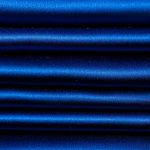Are you ready to learn how to cut lace fabric? In this article, we will guide you through the process step by step.
You’ll discover the types of lace fabric, the tools and materials you’ll need, and the techniques for marking and measuring.
We’ll show you both the straight edge and curved edge cutting methods, as well as tips for cutting intricate lace patterns.
By the end, you’ll have the knowledge and skills to cut lace fabric with precision and confidence.
Let’s get started!
Table of Contents
Types of Lace Fabric
There are several types of lace fabric that you can use for cutting. Lace fabric is known for its delicate and intricate patterns, making it a popular choice for various projects. Different lace patterns can add a touch of elegance and sophistication to any garment or accessory.
One common type of lace fabric is Chantilly lace. It features a fine net background with floral or scalloped designs. Chantilly lace is often used for making wedding gowns, veils, and lingerie due to its romantic and feminine look.
Another popular lace fabric is Alençon lace. It is characterized by its raised motifs that are often embellished with beads or sequins. Alençon lace is commonly used in high-end fashion and couture designs, adding a luxurious and glamorous touch to any outfit.
For a more modern and contemporary look, you can opt for Guipure lace. This type of lace fabric has a heavier and more structured feel, with geometric or floral patterns. Guipure lace is often used for creating stylish dresses, tops, and even home decor items.
In addition to its use in clothing and accessories, lace fabric can also be utilized for craft projects like scrapbooking, card making, and even home decor accents. Its intricate patterns and delicate texture can add a touch of elegance and sophistication to any project.
Tools and Materials Needed
To get started, you’ll need a few tools and materials for cutting lace fabric. Cutting lace requires precision and delicate handling, so having the right tools is essential.
First, you’ll need a pair of sharp fabric scissors. These scissors should be designated for fabric use only, as using them for other materials may dull the blades. Look for scissors with a fine, pointed tip to make intricate cuts easier. Additionally, having a pair of small, sharp embroidery scissors can be helpful for cutting out small details or trimming threads.
Another tool you’ll need is a self-healing cutting mat. This mat not only protects your work surface but also provides a smooth and stable surface for cutting the lace fabric. It’s important to use a self-healing mat to prevent any damage to the lace or the table.
Lastly, a rotary cutter with a small blade is a great tool for cutting straight lines or longer sections of lace. This tool allows for precise cuts and reduces the chances of snagging or tearing the delicate fabric.
Preparing the Lace Fabric
When it comes to preparing lace fabric, two key points to consider are lace fabric selection and cutting techniques.
First, it’s important to choose the right lace fabric for your project, taking into account factors such as color, pattern, and weight.
Once you have selected the lace fabric, mastering cutting techniques is crucial to ensure clean and precise edges.
Lace Fabric Selection
Take a look at the different lace fabric options available and choose the one that best suits your project. When selecting lace fabric, consider the following:
-
Care requirements: Different lace fabrics have different care instructions. Some may require hand washing or delicate machine washing, while others may be safe to wash in a regular cycle. Make sure to check the care label or consult with the fabric supplier to ensure you can properly care for the fabric after it has been cut and incorporated into your project.
-
Trendy designs: Lace fabric trends are constantly evolving. Keep an eye out for popular lace patterns and designs that align with the current fashion trends. This will add a modern touch to your project and ensure it stays in style.
-
Color options: Lace fabrics come in a variety of colors, from classic white and ivory to bold and vibrant hues. Consider the color scheme of your project and choose a lace fabric that complements or contrasts with it. This will help create a visually appealing and cohesive final result.
Cutting Techniques
Consider using different cutting techniques to add dimension and texture to your lace fabric project. By utilizing various cutting tools, you can create intricate lace patterns that will elevate the overall aesthetic of your project. Here are three cutting techniques that you can experiment with:
| Technique | Description |
|---|---|
| Scissor Cut | This is the most common and versatile cutting technique. It allows you to create clean and precise edges on your lace fabric. |
| Laser Cut | If you want to achieve intricate and detailed lace patterns, using a laser cutter is the way to go. It provides precise cuts and allows for greater intricacy in your designs. |
| Rotary Cutter | This cutting tool is ideal for cutting curves and intricate shapes in your lace fabric. It offers smooth and accurate cuts, especially when working with delicate lace. |
Marking and Measuring Techniques
When it comes to precise lace cutting and accurate measurements for lace, there are a few key points to keep in mind.
First, using sharp and precise scissors will help you achieve clean and accurate cuts on your lace fabric.
Second, taking accurate measurements before cutting will ensure that your lace pieces fit together seamlessly.
Lastly, using marking techniques such as fabric markers or chalk can help you accurately mark your lace fabric for cutting and sewing.
Precise Lace Cutting
To achieve precise lace cutting, it’s important to use sharp fabric scissors. Lace fabric is delicate and requires careful handling to maintain its intricate details. Using dull scissors can result in frayed edges and uneven cuts, ruining the beauty of the lace. When cutting lace, make sure to lay it flat on a clean surface and secure it in place with pins or weights. To help guide your cutting, you can mark the lace with tailor’s chalk or washable fabric markers. Take your time and use small, precise cuts to avoid any mistakes. Remember to clean and sharpen your fabric scissors regularly to ensure clean and precise cuts every time.
| Tip 1 | Tip 2 | Tip 3 |
|---|---|---|
| Use sharp fabric scissors | Secure lace with pins or weights | Clean and sharpen scissors regularly |
Accurate Measurements for Lace
Make sure you measure accurately when working with lace to ensure a perfect fit for your project. Lace fabric measurements are crucial for achieving the desired outcome.
Start by using a measuring tape to determine the dimensions needed for your lace fabric. Measure the length and width required, making sure to account for any additional allowances or seam allowances. Accuracy is key, as any errors in measurement can lead to ill-fitting or unevenly cut pieces.
When cutting lace, it’s important to use accurate lace cutting techniques. Use sharp fabric scissors to ensure clean, precise cuts. Take your time and cut slowly along the measured lines to avoid any mistakes.
Straight Edge Cutting Method
The easiest way to cut a straight edge on lace fabric is by using a rotary cutter. Lace fabric can be delicate and prone to fraying, so it is important to use a sharp tool that will minimize damage. A rotary cutter is ideal because it allows for precise cutting without applying too much pressure.
When cutting lace fabric, it is essential to use a diagonal cutting technique. This involves positioning the fabric at a slight angle to the cutter, which helps to prevent jagged edges and fraying. Additionally, it is crucial to maintain the fabric’s integrity during the cutting process. To do this, you should avoid pulling or stretching the lace while cutting, as this can distort the pattern and cause uneven edges.
It is also recommended to place a self-healing cutting mat underneath the fabric to protect your work surface and provide a stable cutting surface. By following these tips and using a rotary cutter, you can achieve a clean and straight edge on your lace fabric while ensuring its longevity.
Curved Edge Cutting Method
When cutting curved edges on delicate lace, you’ll want to use a pair of sharp fabric scissors. Lace fabric is delicate and can easily fray or tear, so it’s important to handle it with care.
To achieve clean and precise curved edges, a zigzag cutting technique is recommended. This technique involves cutting small, quick zigzag motions along the edge of the lace fabric to prevent fraying.
Another option for cutting curved edges is to use a rotary cutter with a pinking blade. This blade creates a zigzag pattern along the edge of the fabric, which helps prevent fraying and adds a decorative touch. When using a rotary cutter, make sure to use a cutting mat underneath the fabric to protect your work surface.
Remember to always work slowly and carefully when cutting curved edges on lace fabric to ensure the best results.
Tips for Cutting Intricate Lace Patterns
To achieve precise and intricate cuts on delicate lace patterns, you’ll want to ensure your scissors are sharp and handle the fabric with care. When it comes to choosing the right scissors for lace cutting, opt for ones with thin, pointed blades. This will allow you to navigate through the intricate details of the lace without causing any damage. Additionally, make sure the scissors have a sharp cutting edge to ensure clean and precise cuts.
To prevent fraying when cutting lace fabric, there are a few techniques you can follow. First, consider using a rotary cutter with a sharp blade instead of scissors. This will help minimize fraying as the rotary cutter cuts through the fabric cleanly. If you prefer using scissors, it’s important to hold the lace fabric taut while cutting. This will help prevent any loose threads or fraying along the edges. Alternatively, you can try using a small amount of fray check or fabric glue along the edges of the lace before cutting. This will add an extra layer of protection and help prevent fraying.
Finishing Touches and Care Instructions
For a professional and polished look, remember to steam or iron your finished lace projects to remove any wrinkles or creases. Proper care is essential to maintain the delicate beauty of lace.
When washing lace, always follow the care instructions provided by the manufacturer. Generally, it is recommended to hand wash lace in cold water using a mild detergent. Avoid harsh chemicals and bleach, as they can damage the delicate fibers. Gently squeeze out excess water and lay the lace flat to dry. To prevent snagging or stretching, avoid hanging lace garments.
If your lace project requires cutting, it’s important to choose the right method. While traditional scissors are commonly used, some prefer using a rotary cutter with a sharp, small blade for intricate patterns. This can provide more control and precision. However, always exercise caution when using any cutting tool to avoid accidents.
Conclusion
In conclusion, cutting lace fabric can be a simple and rewarding task when done correctly. By using the right tools and techniques, you can achieve clean and precise cuts for both straight and curved edges.
Remember to take your time and be careful when cutting intricate lace patterns to avoid any mistakes. Once you have finished cutting, make sure to properly care for your lace fabric to maintain its beauty and longevity.
Happy cutting!
- The Use of Nonwovens in Construction and Civil Engineering - July 11, 2025
- The Use of Nonwovens in Construction and Civil Engineering - July 11, 2025
- The Use of Nonwovens in Construction and Civil Engineering - July 11, 2025





